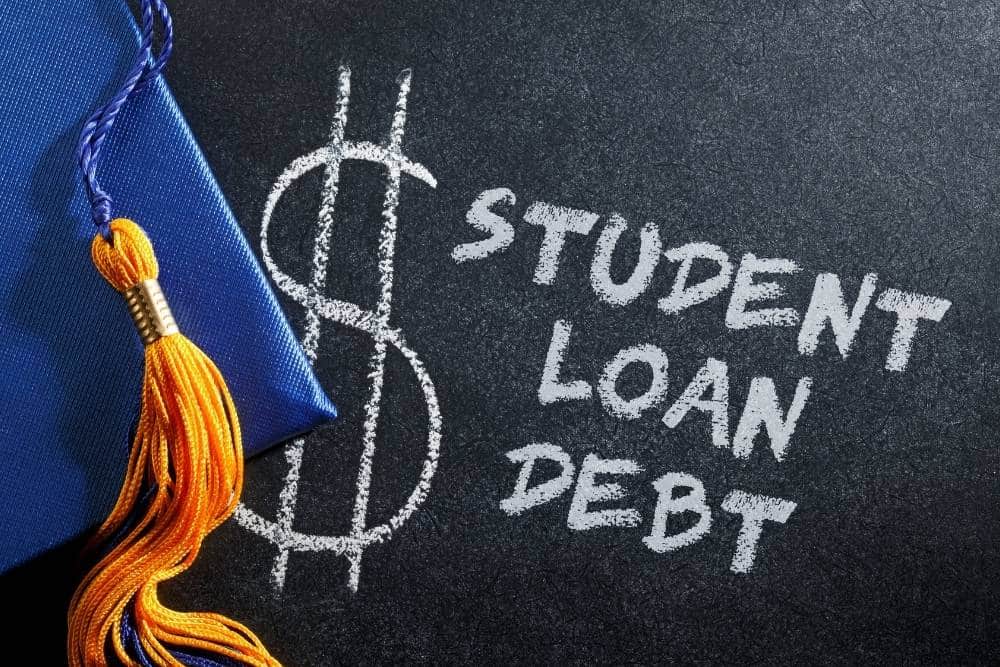Don’t take our word for it! According to a Wall Street Journal Article by Josh Mitchell on April 7th, 2016 over 43% of student loan borrowers don’t make full repayment on their student loans. With 1.3 trillion currently owed in student loan debt, that number has serious meaning.
3.6 million borrowers are in default (12 months or more overdue) another 3 million are less than 12 months past due and another 3 million are in deferment or forbearance. This does not include a huge number of loans that legally have no repayment. However, at least 63 different programs can allow no repayment of a student loan such as an IBR (Income-Based Repayment), and are excluded from the default figures.
Over 50% of all loans are in an IBR and over 33% of all IBR loans have no repayment at all. Since loan payments are based on income if the borrower’s income is zero the payment is zero and after 20 years the loan is charged off. As of Jan 1, 2016, 4.6 million borrowers were in this IBR program.
Government Student Loan Garnishments and Collections
 ⎆ Under performing collectors.
⎆ Under performing collectors.
The powers of a student loan collector are unbelievable. Without getting a judgment, collectors can attach wages, bank accounts, tax refunds, and even social security benefits. According to the WSJ article, Navient claims they contact borrowers 230 to 300 times within a year before the loan goes into default and a student loan becomes over 180 days past due. Navient is just one of 25 different collectors/servicers who bill the government for the collection efforts. Of course, they bill the government whether or not they collect. They also admit 90% of students never respond and over 50% never make a single payment. Additionally, taxpayers are billed for these services and most of the services add right back into the balance of the student loans.
⎆ Wage garnishments push borrowers into IBR programs or repayment.
Wage garnishments are purposefully increased to get the loans out of default and push borrowers into IBR programs or repayment. DOE has also created a behavioral science unit to discover what will promote people into compliance. But, a large percentage of people simply fall off the radar and avoid repayment altogether. Interestingly, being in business for yourself often allows a person the ability to avoid collections. Nonpayment for degrees earned through trade and for-profit schools is also especially a problem.
The truth is, many of these non-paying loans are decades old. The government can’t simply remove them from the books even though they are uncollectible. With a home mortgage, the borrower worries about foreclosure but with a student loan, there is no repossession or foreclosure.
Moreover, there are no credit checks for students to obtain the loans and there are no checks on the schools to make certain the students receive degrees that will help them repay the loans. For some schools and students, the checks are income that does not have to be repaid. Students don’t have to be prepared to benefit from the loans to obtain the loans and the schools don’t guarantee the student will benefit from the education.
⎆ Government student loan garnishments and criminal prosecution.
With low-paying jobs or under performing wages, there is no way for the borrower to repay. Of course, that’s often the trade and for-profit schools simply providing a worthless degree. As an example, 176 million dollars were garnished from October through December 2015 alone and about 700 million being garnished for 2015. But this is still less than half of 1 percent of what is in default. How much is in default? 43% of 1.3 trillion or about 630 billion. Even that figure is low because 35% of 57% of 1.3 trillion or another 259 billion are paying 0ff in IBR loans. Moreover, total loans not being repaid at all stack up to 889 billion out of 1,300 billion.
One of the biggest complaints is about how minorities are given misinformation to maximize the income collectors can make from these loans. Attorneys know that the failure to appear in court may lead to the arrest of a debtor for contempt when the debtor is court-ordered to appear.
Earlier this year stories were released with titles broadcasting borrowers going to jail for the failure to repay student loans. However, there is no crime for the failure to repay a student loan. The collectors rely on the fact that it’s easier to collect if they threaten criminal prosecution. We have wondered if this was a part of the behavioral science unit mentioned above. Remember to never give the collectors any information. Instead, call Nick and let him show you how to manage your student loan.
 Resources for Student Loans
Resources for Student Loans
Other Related Information
How to Stop Student Loan Wage Garnishment
Current Student Loan Interest Rates
How to Stop Student Loan Collections and Garnishments with Bankruptcy
Bankrupt or Discharge Student Loans
Do you need help managing your student loan? Contact my office right away to start the conversation. Nick C. Thompson, Attorney: 502-625-0905.

 ⎆ Under performing collectors.
⎆ Under performing collectors.

